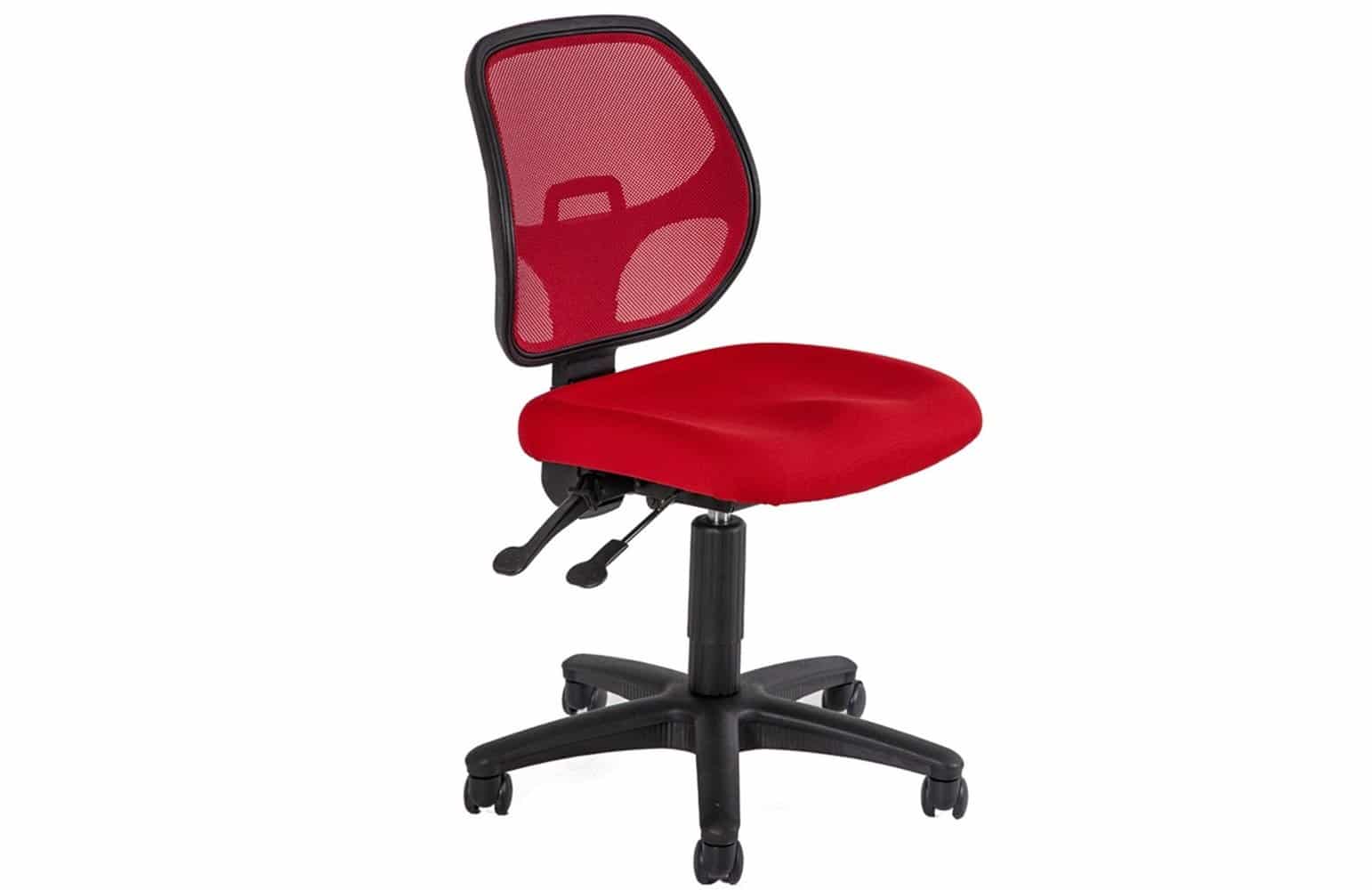The average Australian clerical or admin worker will spend 22hours in a typical week sitting whilst at work (Australian Health Survey 2011-2012). Episodes of prolonged sitting have been linked to increasing rates of musculoskeletal disorders (Safe Work Australia) and a 2014 study by the University of Sydney found that lower back pain due to workplace factors accounted for a third of all work-related disability worldwide.
Posture refers to the position in which the body is held whilst sitting or standing. When sitting at work posture is usually static and it is common for workers to slouch over time; either down in the chair or over the desk. This causes a redistribution of pressure and over a period of time will lead to muscle and ligament strain.
Whilst it may not be possible to reduce the amount of time spent sitting in your office, there are things you can do to reduce the demands it places on your body and choosing the right office chair is key. Ergonomic office chairs have a variety of features that can support your posture and keep you comfortable.
1. Back supports
In order to maintain the natural curve of the lumbar spine your office chair should evenly distribute your weight. Many office chairs also offer built in lumbar supports which can help take the pressure off the lower back when sitting for long periods. Comfort is key. If you don’t feel comfortable you are unlikely to maintain the correct posture.
2. Contoured seats
Contoured seats help to evenly distribute body weight, providing comfort whilst taking pressure off the lower back. Their unique design also helps to prevent compression of the thighs, buttocks and behind the knees.
3. Adjustable features
Modern office chairs can have up to 6 different features that enable you to make adjustments to your chair to optimise comfort and support. The right chair should be quick and simple to adjust meaning that you can easily adopt a comfortable position when changing chairs
- Seat height, depth and tilt
Adjusting the seat height, depth and tilt allow you to adopt the ideal sitting position with hips, knees and ankles at 90degrees regardless of the length of your legs.
- Back rest and tilt
Chairs with adjustable back rests and tilt allow you to place the lumbar support exactly where you need it.
- Arm rests
Adjustable arm rests can reduce the pressure placed on the shoulders and neck by supporting the elbows.
4. Seat padding
Choose a chair made with high quality foam for maximal comfort and weight distribution. Poor quality foams break down quickly which can cause further discomfort.
5. Mobility
A good office chair should allow you to move freely and to access all parts of your workstation without the need to strain. If your office is carpeted consider purchasing a chair mat to assist with this.
Whilst a good chair can support your body and help prevent injury it is important to be mindful and take physical steps to improve your posture during periods of prolonged sitting. Ensure that you sit up straight with your ears, shoulders and hips aligned in a single vertical line and avoid unbalanced postures such as tilting your head, crossing your legs and hunching the shoulders.Also, be sure to take frequent short breaks to stretch and change position.
Still unsure or ready to find the right chair for you? Contact us instore to arrange a free, no obligation seating assessment for your office.
